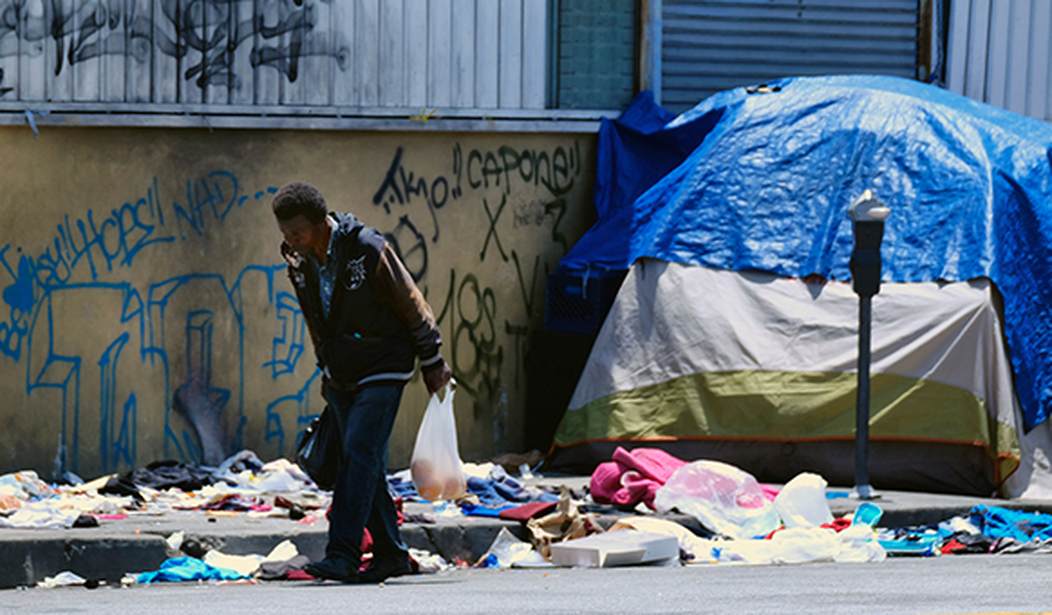Last summer, the Los Angeles City Council voted to allow themselves to designate certain public properties as off-limits to camping in an effort to begin clearing out the seemingly permanent homeless encampments in parks and on sidewalks. The rollout of that plan has been slow, but even in the areas where they are attempting it, the tents and other makeshift shelters of the homeless remain. Residents who have been complaining to officials about the crime and many other problems associated with the encampments have been growing impatient and taking their complaints to the council, but in some areas, there seems to be little to be done about it. Now the Los Angeles Times has looked into the matter and they are reporting that the plan was announced without most of the resources that would have been required to accomplish it, assuming it was even possible. And cooperation with the city’s orders has been spotty, to say the least.
Nine months after the City Council adopted the new law allowing council members to designate areas as off-limits to homeless camps, permanent metal signs setting deadlines for all homeless people to leave have been posted at more than 100 locations. But tents and makeshift shelters remain at many of the sites even weeks or months past the deadlines as outreach workers struggle to persuade people to move voluntarily and the Los Angeles Police Department has issued tickets sparingly.
An insufficient number of outreach workers and a lack of interim housing options have hindered the implementation of the law, according to homeless services providers, and city and county officials. Simply put, there are not enough shelters, tiny homes or hotel rooms for people on the streets to go to and not enough people to help coordinate getting them there.
The result is that there was little consistency in what a team of Times reporters saw when they visited more than two dozen of the banned sites.
What the municipal government of Los Angeles seems to be quickly learning is that there is a huge difference between issuing an order and having that order be successfully carried out. They managed to purchase and erect metal signs saying that camping is forbidden, but that doesn’t really change anything if people simply ignore the signs. Police enforcement has been minimal at best. The LAPD reports issuing a grand total of two citations for setting up tents in a no-encampment zone.
If the homeless ignore the tickets and the orders of the police, what are the cops supposed to do about it? They don’t have enough room in the jails for that many people. Also, arresting the homeless would be a complete reversal of the promises municipal leaders have made in terms of finding a “compassionate” solution to the issue.
The biggest question facing both the police and the city government is what to do with the homeless even if you can get them out of the restricted areas. There are nowhere near enough hotel rooms, beds in shelters or other facilities to put them all, and many of them, particularly those with addiction issues and mental disorders refuse to stay in the shelters they are taken to.
Similarly, simply telling the homeless to leave without offering them a destination doesn’t do any good. One homeless person the Times spoke with asked an obvious question in return. ‘Where am I supposed to go?’ If all you are doing is chasing them out of the parks and more affluent areas to places where they will be less likely to be seen by the public, that’s also not a very “compassionate” approach.
I realize that nobody in the California government wants to hear this, but they’re either going to have to surrender and allow the spread of homeless encampments to continue, or consider taking more stern measures. The mentally ill on the streets should be in appropriate mental health facilities. Those with addictions who are truly willing to seek help should be placed involuntarily in rehab centers. And those who refuse help and choose to stay on the streets may simply have to be moved into other facilities elsewhere. Some have suggested making use of retired military bases. None of that will be cheap, but they’ve allowed the situation to fester for far too long for there to be any easy answers available. The reality, however, is that what they’re doing now clearly isn’t working.







Join the conversation as a VIP Member